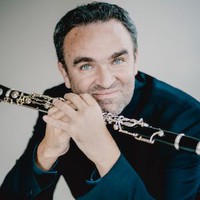James Ferree Plays Mozart’s Fourth Horn Concerto



Growing up in the Atlanta area, TJ Cole began writing music at the piano at six, and by 12 they had already self-produced an album of original compositions. They attended high school at the prestigious Interlochen Arts Academy, and continued studies at the Curtis Institute of Music as a student of Jennifer Higdon. At 21, Cole wrote Death of the Poet for string orchestra, their response to the painting “Death of the Poet Walter Rheiner” by Conrad Felixmüller that they had seen two years earlier at the Art Institute of Chicago.
“The painting was enormous,” Cole wrote in a program note, “with a contorted figure suspended in the air, but the colors were what struck me the most. The artist used vibrant and deep blues, purples, reds and greens to portray this night scene. I’ve always connected strongly to colors, so my reaction to the painting was an emotional one. The figure in the painting, Walter Rheiner, was a poet and close friend of Felixmüller. The painting shows Rheiner’s last moments before his death, which inspired me to compose Death of the Poet in the style of an Elegy.”
Aaron Grad ©2022

Growing up in Salzburg, Wolfgang Amadeus Mozart developed a lasting bond with Joseph Leutgeb, a longtime horn player in the local archbishop’s court orchestra and a dear family friend. When Leutgeb moved to Vienna in 1777 to take over a small cheese shop, Mozart’s father Leopold lent him some money; during the financial struggles that marred the end of young Mozart’s short life, Leutgeb returned the favor.
Their friendship was cemented in a series of works that Mozart wrote after his own move to Vienna in 1781, including this concerto from 1786. The nature of the valveless horn from that period made it challenging to play smooth melodic lines, but Leutgeb was a master of the various lip and hand maneuvers that made it possible to fill in the missing notes, as demonstrated by the linear melodies Mozart wrote in the first movement.
A review in Paris once singled out Leutgeb’s ability to “sing an adagio as perfectly as the most mellow, interesting and accurate voice,” a talent that Mozart put to use in the central Andante that was to be played “cantabile” (i.e. in the manner of singing). Drawing on the traditional use of the horn as an instrument that announced the hunt with its leaping intervals, this concert’s hunt-inspired finale leans into the horn’s outdoor origins.
Aaron Grad ©2022


Get driving directions and find nearby parking.
Find dining options close to the venue.
View seating charts to find out where you'll be seating.
Get driving directions and find nearby parking.
Find dining options close to the venue.
View seating charts to find out where you'll be seating.
